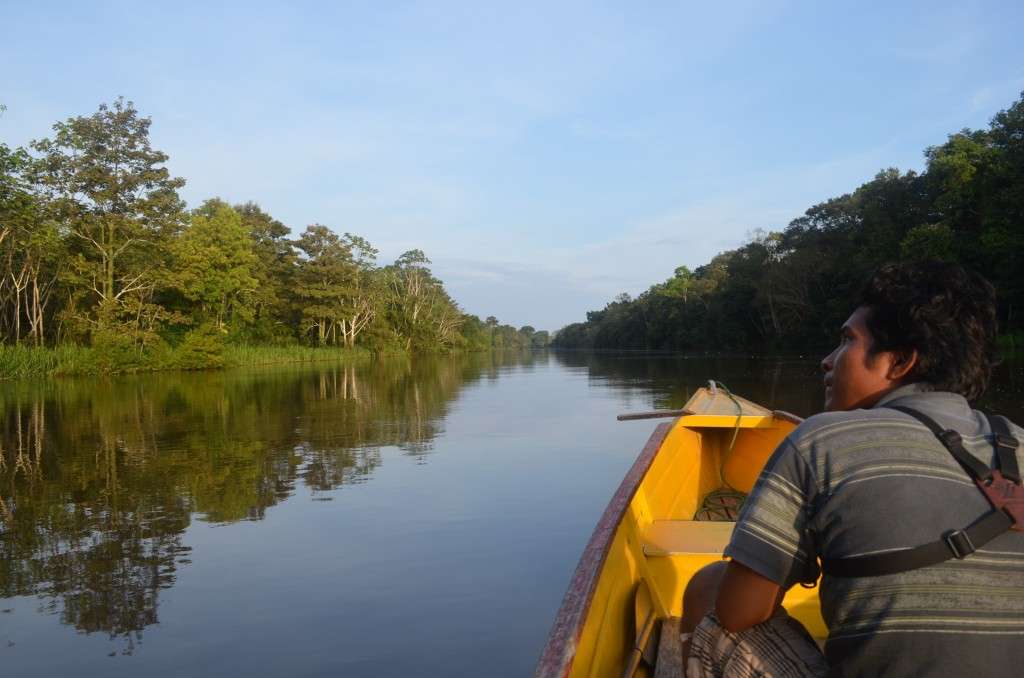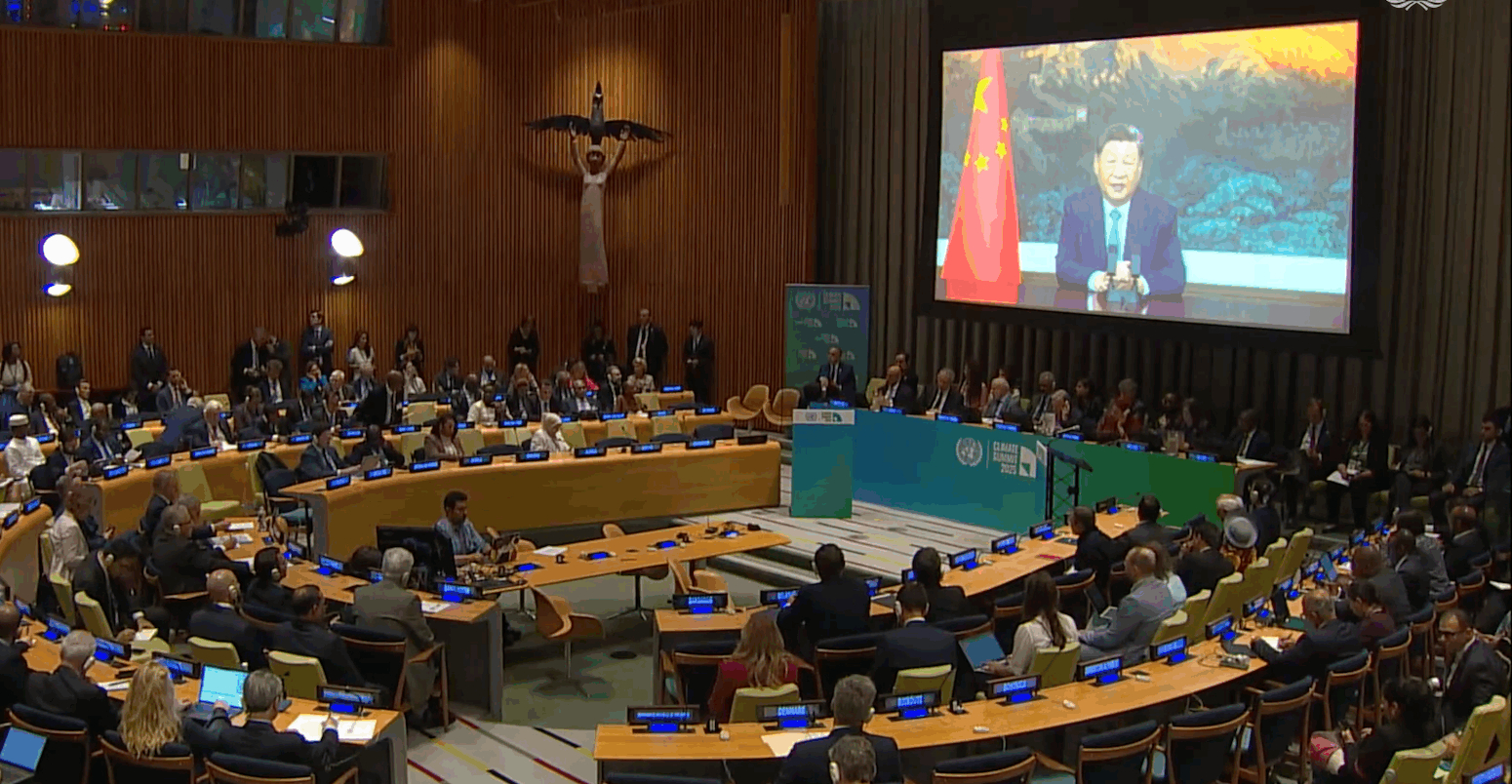Report on Climate Adaptation and Sustainable Development Goals Ahead of COP30
Executive Summary
The 2025 UN Climate Change Conference (COP30) in Belem, Brazil, is poised to centrally address climate change adaptation. According to UN Climate Chief Simon Stiell, key objectives include establishing adaptation indicators and closing the significant adaptation finance gap. These efforts are framed as essential for achieving the Sustainable Development Goals (SDGs), particularly SDG 13 (Climate Action). National Adaptation Plans (NAPs) are identified as the primary instruments for integrating climate resilience with national development, thereby accelerating progress across the entire 2030 Agenda. However, a substantial shortfall in funding remains the most critical barrier to implementation.
COP30: A Pivotal Conference for Adaptation and Global Solidarity
COP30 is designated as a critical juncture for international cooperation on climate change. The conference will serve as a “key test of global solidarity,” focusing on translating climate commitments into tangible actions that advance sustainable development and ensure no one is left behind, a core principle of the SDGs.
- Primary Focus: Climate change adaptation will be the central theme.
- Key Deliverables: Parties are expected to agree upon a framework of adaptation indicators and devise a clear roadmap to mobilize the necessary climate finance.
- Connection to SDGs: Success at COP30 is linked to fostering faster, wider implementation of climate solutions that connect directly to improving lives and advancing goals such as SDG 10 (Reduced Inequalities) and SDG 17 (Partnerships for the Goals).
National Adaptation Plans (NAPs) as a Vehicle for SDG Achievement
NAPs are presented as the foundational blueprints for building resilient societies and economies, directly contributing to the achievement of multiple SDGs. A recent progress report indicates significant global momentum in the NAP process, though implementation is lagging.
Progress and Status
- As of September 30, 144 countries have initiated the NAP process.
- 67 developing countries, including 23 Least Developed Countries (LDCs) and 14 Small Island Developing States (SIDS), have submitted their NAPs.
- Most countries have conducted comprehensive vulnerability assessments, identifying key hazards like droughts, floods, and sea-level rise to prioritize adaptation actions.
Alignment with Sustainable Development Principles
Countries are embedding core principles into their NAPs that align with the 2030 Agenda:
- Inclusivity and Equity: Adopting whole-of-society approaches and ensuring gender responsiveness, which supports SDG 5 (Gender Equality).
- Economic and Social Resilience: Adaptation actions aim to protect communities, economies, and global supply chains, which is vital for SDG 8 (Decent Work and Economic Growth), SDG 2 (Zero Hunger), and SDG 11 (Sustainable Cities and Communities).
- Empowerment: Adaptation is framed not just as protection but as a means of empowering communities to thrive, fostering resilience and sustainable livelihoods.
The Critical Gap in Adaptation Finance: A Barrier to SDG 13
A persistent and substantial finance gap is the primary impediment to the full implementation of NAPs and the achievement of global climate and development targets. The 2024 UNEP Adaptation Gap Report highlights a severe disparity between available funds and adaptation needs.
Financial Landscape
- Estimated Annual Need: US$215–387 billion.
- 2022 International Public Finance Flows: US$28 billion.
- Green Climate Fund (GCF) Support: As of September 2025, the GCF has approved $6.91 billion for 116 adaptation projects in 58 developing countries.
Systemic Barriers to Funding
Despite the readiness of national systems, several barriers prevent the necessary flow of finance:
- Fragmented Support: Funding is often project-based and insufficient for full NAP implementation.
- Access Issues: Many countries face complex approval processes and lack direct access to funds.
- Uneven Distribution: Total funding accessed by developing countries remains uneven.
Mr. Stiell emphasized that climate finance is not “charity” but a vital investment in global stability, protecting populations and economies and ensuring progress toward the SDGs.
International Perspectives and Calls to Action
Global leaders, including India’s Union Environment Minister Bhupender Yadav, are calling for COP30 to be the “COP of adaptation.” There is a strong push to transform policy commitments into practical, locally-grounded solutions.
India’s Position and Actions
- India has finalized its first National Adaptation Plan (NAP), which is expected to be unveiled at or before COP30.
- The NAP is described as a flagship document aligning adaptation planning with national development priorities and global commitments under the Paris Agreement.
- Minister Yadav has called for an agreement on a minimum package of indicators from the UAE-Belem Work Programme to measure progress and ensure tangible outcomes that improve people’s lives.
The consensus is that translating global commitments into real-world actions is essential for ensuring the safety and well-being of billions, reinforcing the overarching goal of the 2030 Agenda to leave no one behind.
Analysis of Sustainable Development Goals (SDGs) in the Article
1. Which SDGs are addressed or connected to the issues highlighted in the article?
-
SDG 13: Climate Action
This is the central theme of the article. The entire text revolves around climate change adaptation, the development of National Adaptation Plans (NAPs), and the financing required to implement these plans. It directly discusses taking urgent action to combat climate change and its impacts, focusing on strengthening resilience and adaptive capacity.
-
SDG 17: Partnerships for the Goals
The article heavily emphasizes the need for global solidarity and cooperation, particularly in financing climate adaptation. It discusses the “adaptation finance gap,” the role of the Green Climate Fund (GCF), and the mobilization of $1.3 trillion in climate finance, all of which are core components of strengthening the means of implementation and revitalizing global partnerships for sustainable development.
-
SDG 1: No Poverty
The article connects climate adaptation directly to protecting the most vulnerable. UN Climate Chief Simon Stiell is quoted saying, “lives and livelihoods are being destroyed in every region of the world, and especially in the most vulnerable countries.” This highlights the link between climate resilience and preventing people from falling into poverty due to climate-related disasters like floods and droughts.
-
SDG 10: Reduced Inequalities
The principle of “leaving no one behind” is mentioned multiple times. The article specifically points out the needs of Least Developed Countries (LDCs) and Small Island Developing States (SIDS), which are disproportionately affected by climate change. The focus on ensuring finance and support reaches these vulnerable nations is a direct effort to reduce inequality.
-
SDG 11: Sustainable Cities and Communities
The article discusses the need to protect communities from “worsening floods, droughts, wildfires, and storms.” The development of NAPs, which include comprehensive vulnerability and risk assessments for hazards like sea-level rise and floods, directly contributes to making human settlements inclusive, safe, resilient, and sustainable.
-
SDG 5: Gender Equality
The article explicitly states that countries are “embedding in NAPs the core principles of… gender responsiveness.” This shows a direct connection to achieving gender equality and empowering all women and girls by ensuring that climate adaptation strategies consider and address their specific vulnerabilities and roles.
2. What specific targets under those SDGs can be identified based on the article’s content?
-
SDG 13: Climate Action
- Target 13.1: Strengthen resilience and adaptive capacity to climate-related hazards and natural disasters in all countries. The entire article is focused on this, particularly through the mechanism of National Adaptation Plans (NAPs).
- Target 13.2: Integrate climate change measures into national policies, strategies and planning. The article details how 144 countries have initiated the NAP process to integrate climate adaptation into “national and sectoral development planning.”
- Target 13.a: Implement the commitment undertaken by developed-country parties to the United Nations Framework Convention on Climate Change to a goal of mobilizing jointly $100 billion annually by 2020 from all sources to address the needs of developing countries… and fully operationalize the Green Climate Fund through its capitalization as soon as possible. The article discusses the “adaptation finance gap,” the role of the GCF, and the need to mobilize “$1.3 trillion in climate finance.”
-
SDG 17: Partnerships for the Goals
- Target 17.3: Mobilize additional financial resources for developing countries from multiple sources. The article highlights the gap between the needed “$215–387 billion/year” for adaptation and the “$28 billion in 2022” provided, emphasizing the need for more financial mobilization.
- Target 17.16: Enhance the Global Partnership for Sustainable Development, complemented by multi-stakeholder partnerships that mobilize and share knowledge, expertise, technology and financial resources, to support the achievement of the Sustainable Development Goals in all countries, in particular developing countries. The COP meetings and the entire discussion around global solidarity and cooperation to fund and implement NAPs are examples of this partnership in action.
-
SDG 1: No Poverty
- Target 1.5: By 2030, build the resilience of the poor and those in vulnerable situations and reduce their exposure and vulnerability to climate-related extreme events and other economic, social and environmental shocks and disasters. The article’s focus on protecting communities from floods, droughts, and storms directly aligns with this target.
-
SDG 10: Reduced Inequalities
- Target 10.2: By 2030, empower and promote the social, economic and political inclusion of all, irrespective of age, sex, disability, race, ethnicity, origin, religion or economic or other status. The article’s emphasis on “leaving no one behind” and adopting “whole-of-society approaches” in NAPs supports this target.
-
SDG 11: Sustainable Cities and Communities
- Target 11.b: By 2020, substantially increase the number of cities and human settlements adopting and implementing integrated policies and plans towards inclusion, resource efficiency, mitigation and adaptation to climate change, resilience to disasters, and develop and implement, in line with the Sendai Framework for Disaster Risk Reduction 2015-2030, holistic disaster risk management at all levels. The development and implementation of NAPs, as described in the article, is a direct implementation of this target at a national level.
3. Are there any indicators mentioned or implied in the article that can be used to measure progress towards the identified targets?
Yes, the article mentions or implies several indicators:
- Development of Adaptation Indicators: The article explicitly states that at COP30, “parties expected to agree on adaptation indicators.” It also mentions the “UAE-Belem Work Programme [on the development of indicators for measuring progress achieved towards the targets],” which is a direct reference to creating formal metrics.
- Number of Countries with National Adaptation Plans (NAPs): The article provides specific numbers: “144 countries had initiated and launched the NAP process” and “67 developing countries… had submitted their NAPs.” This serves as a direct indicator for Target 13.2 (integrating climate measures into national policies).
- Amount of Climate Finance Mobilized: The article quantifies the flow of adaptation finance, stating it “increased… to US$28 billion in 2022.” It also mentions the estimated need (“US$215–387 billion/year”) and the overall goal (“mobilise $1.3 trillion”). These figures are direct indicators for Target 13.a and Target 17.3.
- Number of Adaptation Projects Funded: The text mentions that “116 single- or multi-country adaptation and cross-cutting projects approved for implementation under the GCF, comprising $6.91 billion in financing.” This is a concrete indicator of implementation progress.
- Vulnerability and Risk Assessments: The article states that “most countries have undertaken comprehensive vulnerability and risk assessments at the national and sectoral level.” The completion of these assessments can be used as a qualitative indicator of progress in building resilience (Target 1.5 and 13.1).
4. Summary Table of SDGs, Targets, and Indicators
| SDGs | Targets | Indicators Identified in the Article |
|---|---|---|
| SDG 13: Climate Action | 13.1: Strengthen resilience and adaptive capacity. 13.2: Integrate climate change measures into national policies. 13.a: Mobilize climate finance for developing countries. |
– Number of countries with initiated/submitted National Adaptation Plans (NAPs) (e.g., 144 initiated, 67 submitted). – Agreement on a formal package of adaptation indicators (mentioned as a goal for COP30). – Total amount of climate finance mobilized (e.g., $28 billion in 2022) vs. the identified need ($215–387 billion/year). |
| SDG 17: Partnerships for the Goals | 17.3: Mobilize additional financial resources for developing countries. 17.16: Enhance the Global Partnership for Sustainable Development. |
– The “adaptation finance gap” (difference between needs and flows). – Amount of financing approved through mechanisms like the Green Climate Fund (GCF) (e.g., $6.91 billion for 116 projects). |
| SDG 1: No Poverty | 1.5: Build the resilience of the poor and reduce their vulnerability to climate-related extreme events. | – Number of countries that have undertaken comprehensive vulnerability and risk assessments as part of their NAPs. |
| SDG 10: Reduced Inequalities | 10.2: Empower and promote the inclusion of all. | – Mention of specific support for LDCs and SIDS (e.g., 23 LDCs and 14 SIDS submitted NAPs). – Adoption of “whole-of-society approaches” in planning. |
| SDG 11: Sustainable Cities and Communities | 11.b: Increase the number of cities and settlements adopting integrated policies for climate change adaptation and disaster resilience. | – The existence and implementation of NAPs which cover resilience to floods, droughts, and sea-level rise. |
| SDG 5: Gender Equality | 5.5: Ensure women’s full and effective participation and equal opportunities for leadership. (Implied through policy integration) | – Inclusion of “gender responsiveness” as a core principle in the formulation of NAPs. |
Source: hindustantimes.com







